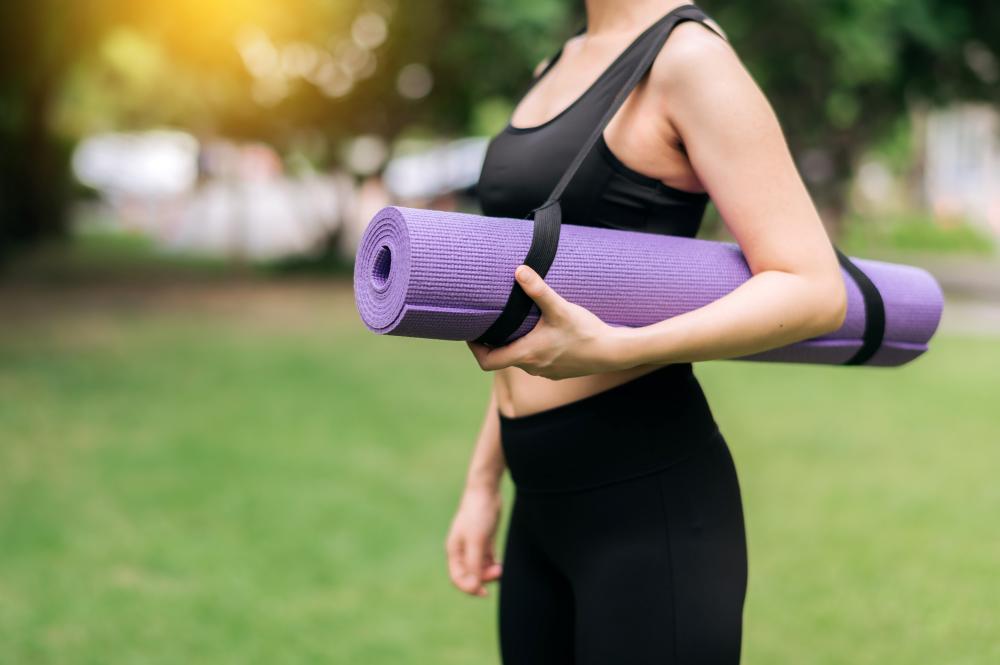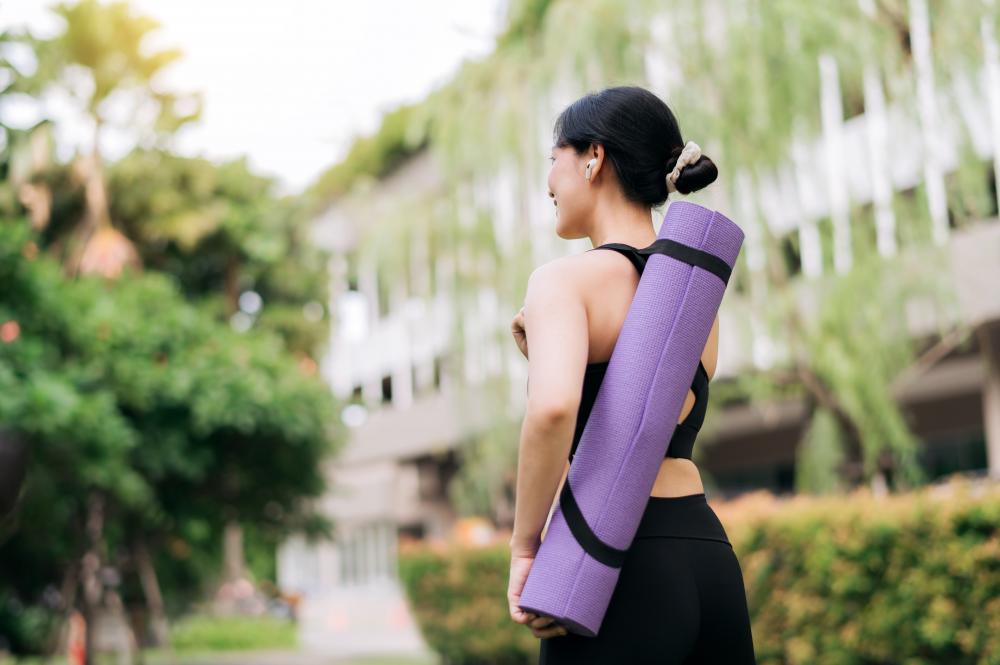What To Use Instead Of A Yoga Mat

Introduction to Yoga Without a Mat
As enthusiasts from Yogamatsstore, we understand the importance of a good-quality yoga mat for enhancing your practice. However, there are moments when you find yourself without your beloved mat, maybe it’s out of reach, or you’re seeking to tread lightly on the earth by reducing your use of synthetic materials. In such instances, knowing what to use instead of a yoga mat can keep your practice going strong, anywhere and anytime.
Natural Surfaces as an Alternative
One of the first options to consider instead of a yoga mat is the very ground beneath us. Mother Earth provides various natural surfaces that can offer a unique and grounding experience during your practice.
Sand: A beach can provide a soft, forgiving surface for your practice, helping you engage your core more deeply to maintain balance. The natural slope and texture of the sand add an extra challenge to your poses, making your body work in new ways.
Grass: A lush lawn can be another excellent option. The soft, even surface of grass is gentle on your joints, and the connection to the earth can deepen your practice, making it feel more revitalizing. However, be mindful of allergens and hidden objects in the grass that might disrupt your flow.
Leveraging Household Items
When you’re indoors and searching for what to use instead of a yoga mat, household items can come to the rescue.
- Towels: A large bath towel or beach towel can serve as a temporary yoga mat. It provides a layer of cushioning and is especially useful on carpeted floors. For harder surfaces, consider folding the towel for extra knee support.
- Rugs: A rug can offer more grip and stability compared to a towel, especially if it has a non-slip underside. Ensure the rug is large enough to accommodate your poses and provide ample space for movement.
Exploring Fabric Options
Another avenue to explore when considering what to use instead of a yoga mat is the variety of fabric-based alternatives available, particularly those that are eco-friendly.
Recycled Blankets: Thick, woven blankets made from recycled materials can be a sustainable choice. These blankets are portable, easy to clean, and provide sufficient padding for seated or lying poses. Plus, they contribute to reducing waste.
DIY Solutions: For the crafty yogis, creating a custom yoga mat alternative from upcycled fabrics could be a fulfilling project. Materials like organic cotton, jute, and hemp offer durability, natural grip, and they’re kind to the planet. This approach allows for personalization in size, thickness, and design to match your practice and values.
Focusing on Standing Poses
When a mat isn’t available, adjusting your practice to include more standing poses can be beneficial. Standing poses generally require less surface grip and cushioning, making them ideal for practicing on alternative surfaces.
Engage in poses like Mountain Pose, Warrior series, and Tree Pose to build strength, balance, and focus without the need for a mat. This practice can also improve your posture and alignment through the direct feedback of the ground beneath your feet.
Supplementing with Yoga Accessories
While exploring what to use instead of a yoga mat, don’t overlook the potential of yoga accessories to enhance your practice.
- Yoga Blocks: These can provide support and depth in poses, especially in a mat-less practice. Use them to maintain alignment and stability during poses that demand more balance.
- Yoga Straps: Straps are invaluable for extending your reach and deepening your stretches, particularly when you’re working without a mat’s grip to aid your poses.
Safety Considerations
Regardless of the alternative you choose instead of a yoga mat, prioritizing your safety is crucial. Always check the surface for stability, slip-resistance, and potential hazards before beginning your practice. Listen to your body and adjust poses as needed to avoid strain or injury.
Remember, the essence of yoga resides in the connection between mind, body, and spirit — not in the equipment. Practicing without a mat can offer a fresh perspective, challenge your routine, and deepen your appreciation for the practice.
A Personal Perspective
Transitioning to practicing without a traditional yoga mat was an enlightening experience for me. Initially driven by necessity, I discovered a newfound sense of freedom and adaptability in my practice. It encouraged me to be more mindful of my body’s positioning and the surfaces I chose to practice on. This journey has not only expanded my appreciation for the versatility of yoga but also highlighted the importance of sustainability and simplicity in my daily practice.
Embracing Flexibility in Your Practice
In conclusion, while Yogamatsstore champions the use of quality yoga mats, we also embrace the flexibility and creativity that comes with exploring what to use instead of a yoga mat. Whether through natural surfaces, household items, fabric alternatives, or a focus on standing poses, there are myriad ways to adapt and enjoy your yoga practice. By incorporating these alternatives, your yoga journey can continue to flourish, anywhere, anytime — with or without a mat.

Can you do yoga without a mat?
Absolutely, you can practice yoga without a mat! At Yogamatsstore, while we advocate for quality mats to enhance your practice, we also understand and appreciate the flexibility and innovation that comes from using alternative surfaces. Practicing yoga without a mat can connect you more deeply with your surroundings, whether that’s the natural earth beneath you or a household surface. It encourages a mindful approach to your practice, tuning you into how different textures and stabilities affect your poses and grounding. This experience can be incredibly liberating and enlightening, showing that the essence of yoga transcends any physical tool or accessory.
What can be used as a yoga mat?
Many items can serve as functional alternatives to a traditional yoga mat. For outdoor practices, natural surfaces like sand or grass offer a unique and grounding experience. Indoors, large towels, rugs with a non-slip underside, or thick, woven blankets can substitute nicely. Towels are particularly handy for their cushioning on softer surfaces like carpets, while rugs can provide more stability on slippery floors. For those interested in sustainability, crafting a DIY solution from upcycled fabrics like organic cotton, jute, or hemp can be both eco-friendly and personalized to fit your practice needs. Remember, the goal is to maintain comfort, grip, and stability during your yoga session.
What yoga to do if you don’t have a mat?
When you’re without a mat, focusing on standing poses can be a great way to maintain your practice. Poses like Mountain Pose, the Warrior series, and Tree Pose don’t require the cushioning and grip that a mat provides, making them ideal for practicing on alternative surfaces. These standing poses help build strength, balance, and concentration while allowing you to connect directly with the ground, enhancing posture and alignment through natural feedback. Adjusting your practice in this way can offer a fresh perspective and highlight the adaptability of yoga to various conditions.
Can I use a towel as a yoga mat?
Yes, a large bath or beach towel can indeed function as a temporary yoga mat. Especially on carpeted areas, a towel offers an added layer of cushioning. For practices on harder surfaces, folding the towel for extra padding under the knees or back can provide additional support. While a towel may not offer the same grip as a traditional yoga mat, it’s a readily available and versatile alternative that can suit a variety of situations. If you’re looking to enhance grip, placing a yoga towel designed for that purpose over the top can also help mimic the mat experience more closely.
Exploring Alternatives: How Does Not Using a Traditional Mat Impact Your Practice?
Stepping away from the traditional yoga mat opens up a world of creativity and adaptability in your practice. It encourages a deeper awareness of your surroundings and how different surfaces can influence your poses and alignment. Practicing on alternative surfaces such as sand, grass, or even indoor options like towels and rugs not only tests your balance and strength in new ways but also promotes environmental consciousness and sustainability. This mindfulness towards what’s beneath you can translate into a more profound connection with your practice, encouraging flexibility not just in your body but in how you approach the world around you. Plus, it’s a reminder that yoga is accessible anywhere, anytime – no specific equipment required. Have you explored practicing without a traditional mat? What was your experience like?
Resources
- National Institutes of Health (NIH) – Visit the NIH website for information on the benefits of yoga and alternative practices without a mat: https://www.nih.gov/
- Environmental Protection Agency (EPA) – Explore eco-friendly options for yoga practice and sustainability: https://www.epa.gov/
- Yoga Alliance – Discover tips and insights on yoga accessories and safe practices without a mat: https://www.yogaalliance.org/
Recent Comments